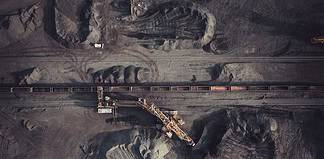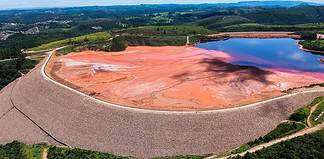The Fosterville gold mine in Victoria has played a big part in helping owners Kirkland Lake Gold exceed its production guidance for the first quarter of 2021, following a record year in 2020.
Combined with strong results from the Detour Lake mine in Ontario, Canada, production results went beyond guidance target levels.
Higher gold grades were achieved at Fosterville following changes to mine sequencing, pushing it to another record quarter.
The Canadian company delivered record production for the June quarter of 2021 with 379,195oz, a 15% increase on the corresponding period last year and 25% higher than the previous quarter.
This was primarily driven by the Fosterville mine achieving higher than planned production.
Production at Fosterville for YTD 2021 totalled 266,672oz which compared to 314,970oz for YTD 2020.
The change in production from YTD 2020 reflected a lower average grade consistent with the company’s previously stated plan to reduce production in the Swan Zone by increasing mining activities in other, lower-grade, areas of the mine, with the intention of creating a more sustainable operation over a longer period while the company continues its extensive exploration program.
The Swan Zone accounted for 47% of tonnes milled and 76% of ounces produced in YTD 2021 versus 62% and 89%, respectively, for the same period in 2020.
Kirkland Lake president and chief executive officer Tony Makuch said the company is on track to meet the upper range of its annual production guidance of 1.3moz to 1.4moz.
“The record production in Q2 (second quarter) 2021 was largely driven by strong results at Fosterville, as well as higher levels of production at both Detour Lake and Macassa compared to both Q2 2020 and the previous quarter,” he said.
“Higher than planned production at Fosterville was mainly related to continued grade outperformance and changes in mine sequencing which resulted in an improved grade profile for the quarter.
“At June 30, 2021, all three of our cornerstone assets were on track to achieve their full-year 2021 production guidance, with Fosterville positioned to potentially beat its guidance of 400,000–425,000oz.”
Kirkland Lake also completed an exploration project and deployed five drills to Fosterville in June, selling 364,575oz of gold at $1814/oz in the second quarter of 2021.
Mr Makuch said it was the largest exploration program at Fosterville since acquiring the mine in 2016, including $85-95m worth of drilling and development.
“The primary objective of the program was to identify additional high-grades zones to provide future high-grade production,” he said.
“The 2021 exploration plan largely follows up on existing drill results that included the intersection of quartz with visible gold, found in large concentrations and at exceptional grades in the Swan Zone, in multiple other locations.”

But he said production at Fosterville in 2021 was likely to be lowered from the levels achieved in 2019 and 2020.
“We have a large ore body at Fosterville, but the high-grade components of the existing mineral reserve involve a short production life,” he said.
“When you consider that we have identified a number of large mineralised systems, all including intersections containing quartz with visible gold, we remain optimistic that additional high-grade zones can be identified.
“Our challenge is to maintain a sustainable and economic operation while we continue to drill to identify the next high-grade area for future mining.
“The result of our work is a production profile that includes the 400,000 to 425,000oz in 2021, moving to a range of 325,000 to 400,000oz in 2022 and 2023.
“Longer term, we will work to sustain operations at that level of production for a number of years, subject to continued drilling success.
“Our budget for exploration at Fosterville in 2021 is $85-$95m, by far our largest commitment since we acquired the mine in November 2016.”
Fosterville has consistently returned the best recovery rate of all the company’s projects over the past six months, as 98.2% of the mine’s resource was retrieved.
The high-grade, low cost underground gold mine, located 20km from the city of Bendigo, features growing gold production at increasingly high grades, as well as extensive in-mine and district scale exploration potential.
The mine was acquired by Kirkland following the company’s takeover of Australian miner Newmarket Gold.
History
Fosterville commenced operation in 2005 and, during its initial years, produced gold from near-surface, low-grade mineralisation.
A major inflection point was achieved in 2015 with the discovery of the Eagle zone, containing high-grade visible-gold bearing mineralisation, which resulted in a significant improvement in the mine’s overall Mineral Reserve grade, production profile and unit cost performance.
The mine is located in an area with well-developed infrastructure and is accessible by paved roads. Fosterville’s ore is processed at the Fosterville Mill, a 2275t per day processing facility.

Mining method and processing
Mining activities at Fosterville are focused on the Central, Phoenix and Harrier underground ore zones.
All areas are extracted using open stoping techniques with the application of cemented rock fill where applicable and practical.
Selection of the specific mining method within the open stoping regime is based upon previous experience at the Fosterville mine and expectations of ore zone geometry and geotechnical conditions.
Underground mining is conducted using a conventional fleet including jumbos, production drills, loaders, trucks and ancillary equipment.
Open cut mining (when required) is conducted using a conventional fleet including excavators and trucks with the mining fleet and workforce being contract.
The processing path for the ore involves crushing and grinding followed by flotation, bacterial oxidation and CIL circuits.
The modern sulphide treatment plant is one of the world’s leading BIOX systems and has achieved record recoveries. In addition, the company installed a gravity gold circuit in 2016. “Fosterville commenced production in April of 2005 and produced its one millionth ounce of gold in December 2015, representing an important milestone of safe and sustainable production at the mine,” Mr Faulkner said.
“In 2020, the operation produced a record 640,467 oz of gold at an average grade of 33.9 g/t Au and average recoveries of 98.9%.”








































